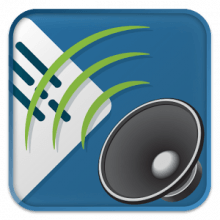LockNote - Password maker for text files!
Welcome to Steganos LockNote.
Type some text and close Steganos LockNote when you are done. What you typed will be encrypted using a password, which you supply.
You can also drop text documents on Steganos LockNote to turn them into encrypted self-opening documents as well.
You can start over by removing all text. You can also clear the text field to reset the password.
This is a Steganos LockNote - Self-modifying encrypted notepad.
How to use?
- Click "LockNote.exe" file.
- You will find some text.
- Remove that text.
- Now write your personal information.
- Then exit, encription password will be prompted.
- Enter your choice of password and follow the screen.
- Now you can open the same "LockNote" file with your chosen password!
- You can reset the password by clearing the text again and again!
Important note:
- If you forget the password of your saved LockNote file, nothing can be done!
- Copy the original LockNote file somewhere in your PC / Mobile to reset your personal info / password is highly recommended.
Build Notes:
As of version 1.0.5, LockNote builds with Microsoft Visual Studio 2008.
The old solution and project files for Microsoft Visual Studio .NET 2003
are included as well.
There is also initial support for the SCons build system, but you need
to manually modify the SConstruct file to get it to work.
The LockNote source has following dependencies:
* CryptoPP, available at http://www.cryptopp.com/.
The source must reside in the cryptopp subdirectory, and a compiled libfile
named 'cryptlib.lib' must reside in the root folder of the LockNote source.
(Note that if you build a Debug version, you need a Debug build of 'cryptlib.lib'
in the root folder)
* AESPHM, a module using the CryptoPP, available at
http://www.denisbider.com/aesphm.zip
* WTL, available at http://wtl.sourceforge.net/.
The WTL include files must reside in the wtl80 subdirectory.
The release build will compile with deprecation warnings in VS 2008 due to some
functions used in the code for which there are now replacements.
Thats it! enjoy with blindhelp.net
Download:
- 395 reads






